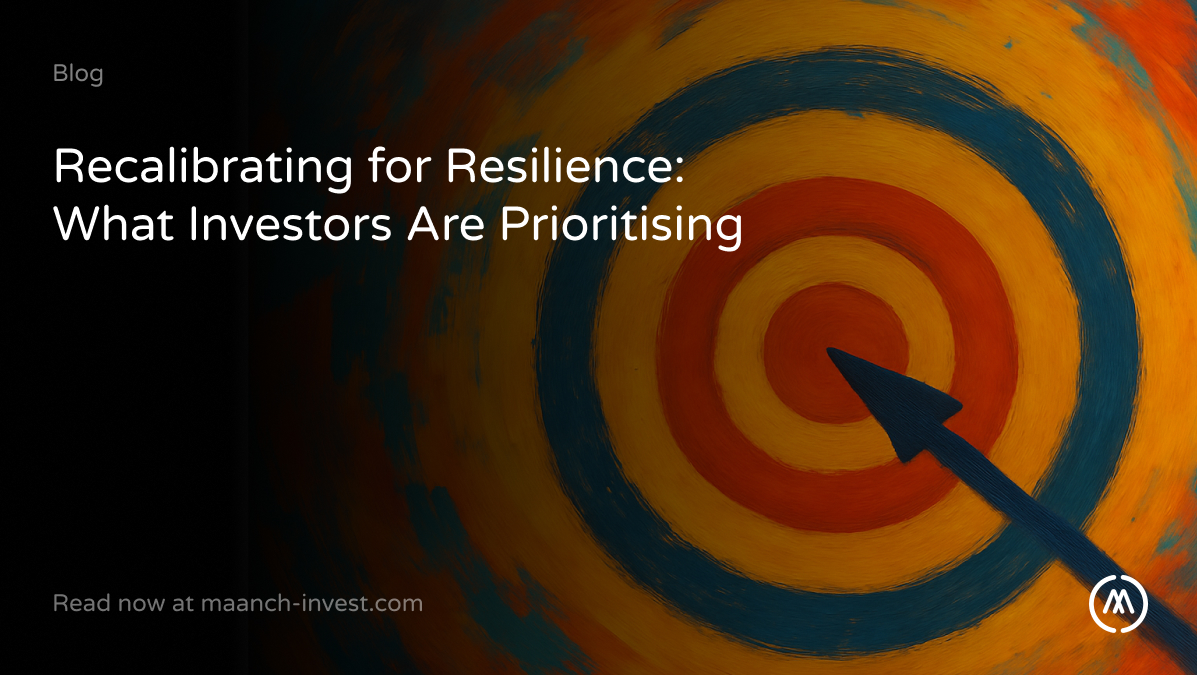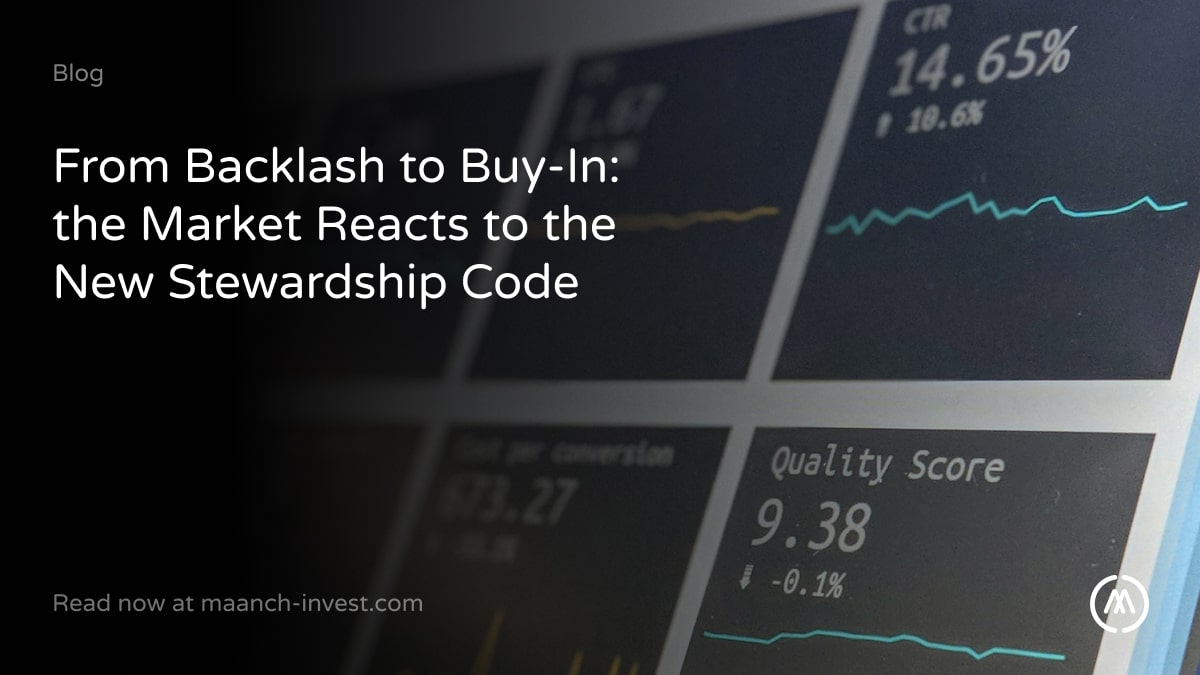A conversation with Victoria Leggett
In a recent conversation with Victoria Leggett, Head of Impact and Fund Manager at UBP, we explored their approach to engagements and active ownership, specifically on the biodiversity front. The discussion uncovers the complexities of managing data challenges and the promising regulatory opportunities on the horizon for biodiversity funds.
1. Describe your role at UBP and your career path so far.
In my role as Head of Impact at UBP, I focus on creating impact products accessible to a wide range of investors. Our approach to impact in listed equity sets us apart, especially with our engagement efforts at the core of what we do. As part of this role, I also co-manage the Biodiversity Restoration Fund, which adds a unique perspective as both a sustainability advocate and a portfolio manager.
Before my current role, I served as Head of Responsible Investment at UBP and have had a history as a fund manager, prior to this.
2. How do you engage with companies and differentiate your process from the wider asset management teams?
Our engagement strategy within the impact team operates on three fronts. Firstly, we employ a systematic approach through the Impact Engagement Framework (IEF), an annual sustainability audit of all holdings in the impact funds. This is a great barometer for us to gauge progress on both ESG and impact factors. We’ve also integrated the Maanch Engagement Tracker to streamline and track these interactions more effectively. Maanch Engagement Tracker has been really useful for logging these interactions, and it’s much easier to see progress than it used to be.
Secondly, our team conducts targeted or issue-based ad hoc engagements, documented again using Maanch Engagement Tracker, which helps us monitor progress and escalation processes. Interestingly, we’ve noticed our wider equity teams also use Maanch Engagement Tracker, making collaboration more seamless, particularly on issue-focused engagements.
However, the standout differentiator in our engagement approach lies in multi-stakeholder collaboration. Recognising the limitations of bilateral engagement, we’ve evolved to bring together diverse voices like non-profits, academics, policymakers, and corporations. This approach is especially impactful in driving systemic change, as it encourages dialogue among parties that traditionally don’t interact. This alignment of stakeholders, particularly in areas like biodiversity, is where we believe true transformation can occur.
3. Could you explain the criteria employed by your Positive Impact Equity fund to choose companies making a positive impact? How do you evaluate their alignment with the fund’s objectives in terms of technology, business models, and values?
Positive Impact Equity fund employs a comprehensive selection process centred around alignment with our objectives. Our proprietary impact assessment tool, IMAP, was developed to capture this alignment. IMAP stands for Intentionality, Materiality, Additionality, and Potential.
Intentionality involves sustainability targets, capital allocation, and business strategy for the future. Materiality gauges current impact and the proportion of revenue generated from impactful activities. Additionality examines uniqueness, patents, and barriers to entry. Lastly, Potential evaluates transformative potential in business models, technologies, and values.
IMAP’s comprehensive analysis acts as the gateway for companies entering our fund, ensuring they truly align with our objectives and have the potential to drive meaningful positive change.
4. What does engagement look like for the Biodiversity Fund?
Our approach to engagement for the Biodiversity Fund involves a strong emphasis on collaboration. To address the complexities involved, we established a dedicated biodiversity committee. This committee consists of influential figures like Tony Juniper and NGOs such as the Cambridge Conservation Initiative (CCI) and Peace Parks Foundation. Their diverse expertise enriches our engagements with companies in the fund.
Additionally, our innovative workshops expand engagement beyond the norm. For example, a workshop focused on the food system brought together companies from various points in the value chain. This type of partnership-oriented engagement allows companies to openly discuss challenges and limitations, fostering a sense of joint progress. Interestingly, the workshop revealed that consumer engagement in biodiversity lags behind climate awareness. This insight prompted us to organise a subsequent workshop for wider stakeholders, showcasing our learnings and advocating radical collaboration. Given the nascent data landscape, such collaborative efforts are crucial for meaningful impact.
5. What metrics and indicators do you find valuable?
When we discuss sustainability data, especially in the context of biodiversity, the challenge lies in the lack of consistent and audited data.
In light of the imminent launch of TNFD, it’s important to approach it from the perspective of the companies we invest in. One aspect we should encourage companies to focus on is their geographical presence. However, the process of gathering location data varies greatly across different sectors. For instance, the forest sector has relatively straightforward location data, whereas consumer goods companies face more complexity. The forthcoming TNFD framework, will play a key role in bridging this gap, and we can derive informed insights into the risks and opportunities associated with each company’s sustainability stance.
6. What obstacles hamper increased investment in biodiversity funds? How can we overcome these challenges to attract more capital for biodiversity preservation and restoration?
One significant challenge is the issue of data. This limitation not only affects biodiversity funds but also impacts the broader landscape of sustainable investments.
Interestingly, regulations hold the potential to both address and alleviate some of these challenges. Reflecting on the evolution of climate as an asset class, the transformative role of frameworks like TCFD and the emergence of SBTi’s was pivotal. These factors marked an inflexion point, propelling climate into a more mature asset class.
As regulatory frameworks and not-for-profit organisations like CDP gain momentum, particularly in areas like deforestation reduction and water usage, we can anticipate positive changes.
While COP15 might not have echoed the scale of the Paris Agreement, the ambitious global biodiversity framework it set in motion holds immense potential. This could be a turning point, similar to how Target 15 marked a step forward. As these developments unfold, barriers could gradually diminish, creating a more conducive environment for increased capital flow into biodiversity preservation and restoration.
7. What are your perspectives on the Global Biodiversity Framework for mandatory reporting on nature?
The proposal for mandatory reporting on nature within the Global Biodiversity Framework is a significant step forward. Our organisation has demonstrated support for this initiative by aligning with the Business for Nature – Make it Mandatory campaign. This reflects our belief in the potential of Target 15 to accelerate biodiversity’s journey into the realm of credible and mature asset classes within private markets. This dynamic shift echoes the trajectory that climate experienced on its path to greater recognition and self-sufficiency, reducing reliance on public finance.
We’re at an exciting juncture, and maintaining momentum is paramount. While climate and nature-related discussions may be vying for attention amidst global events, I see COP28 as the ultimate test of nations’ commitment to this cause. This conference will hold tremendous importance in shaping the trajectory of biodiversity’s place on the global agenda.
When we consider the challenge of garnering attention for biodiversity, there seems to be a complexity that might deter engagement. Climate is a truly global phenomenon, whereas biodiversity can be profoundly local. It’s essential to communicate clearly that addressing biodiversity isn’t solely someone else’s responsibility; it’s an issue that individuals can directly impact on a micro level, making meaningful contributions to nature’s restoration. This shift in perspective might just be the key to enhancing engagement and nurturing enthusiasm for biodiversity conservation.
8. What is the Investment Leaders Group and its objectives?
The Investment Leaders Group has been an integral part of our engagement for approximately five years. Recently, I was invited as a co-chair, alongside Tim Manuel from Aon. Accepting this role was a significant decision due to the group’s efficacy and impact, particularly in terms of its objectives.
The group’s strength lies in its well-defined mission: to bridge the gap between academic insights and real-world application. Our focus centres on areas where we can uniquely contribute and influence change. This approach is most evident in initiatives like the nature-related risks series, which gained substantial attention. Currently, we’re finalising the last handbook in that series, which was notably ahead of the curve relative to the TNFD. This work has also informed the TNFD process, demonstrating our group’s relevance.
Our strategy involves pinpointing areas where the market seeks answers to pressing questions, yet few solutions exist. By combining the expertise of Cambridge with the insights of investor members, we craft practical solutions that address these gaps. This collaborative effort reflects the essence of the Investment Leaders Group’s objectives—to provide meaningful and actionable contributions to the investment landscape.
9. How has the Maanch Engagement Tracker benefited your impact team in enhancing stewardship?
We are in the initial phases of utilising the Maanch Engagement Tracker, and can already observe its benefits. It has proven valuable in providing insights into the extent, progression and quality of our engagements. This visibility has been particularly useful while collaborating with other teams within our organisation.
About Maanch Engagement Tracker
Maanch Engagement Tracker is a cloud-based solution to track, report and analyse all portfolio engagements for improved collaboration, transparency and compliance with global regulations.




